
The views during the hike to Choquequirao are impressive. The path crosses a landscape of high mountains, snowy peaks, the Apurimac River, and hillsides covered with vegetation, all at an altitude of more than 2,800 meters. The sky, deep blue and cloudy in parts, frames a setting dominated by the Andean condor, which often soars through the air of this remote valley. Hidden in the middle of this wild landscape is Choquequirao, the Inca city known as the "Cradle of Gold".
Discovered by explorer Hiram Bingham in 1909, shortly before he reached Machu Picchu, Choquequirao remains hidden among the vegetation even today, with approximately 80% of its area still covered by the jungle. Unlike other more accessible destinations, reaching Choquequirao requires physical commitment, since the hike can last between 4 and 5 days and starts from the town of Cachora, about a 4 hour drive from the city of Cusco. Along the way, the landscape changes constantly: rugged mountains, deep canyons, dusty paths, and jungle sections offer a unique experience.
According to chronicles and stories, Choquequirao would have been one of the last refuges of the Incas after the fall of Cusco. After the defeat of Manco Inca II against the Spanish, the survivors went into these remote lands to resist the invasion for more than four decades; this history has fueled its legend as "the last Inca city".
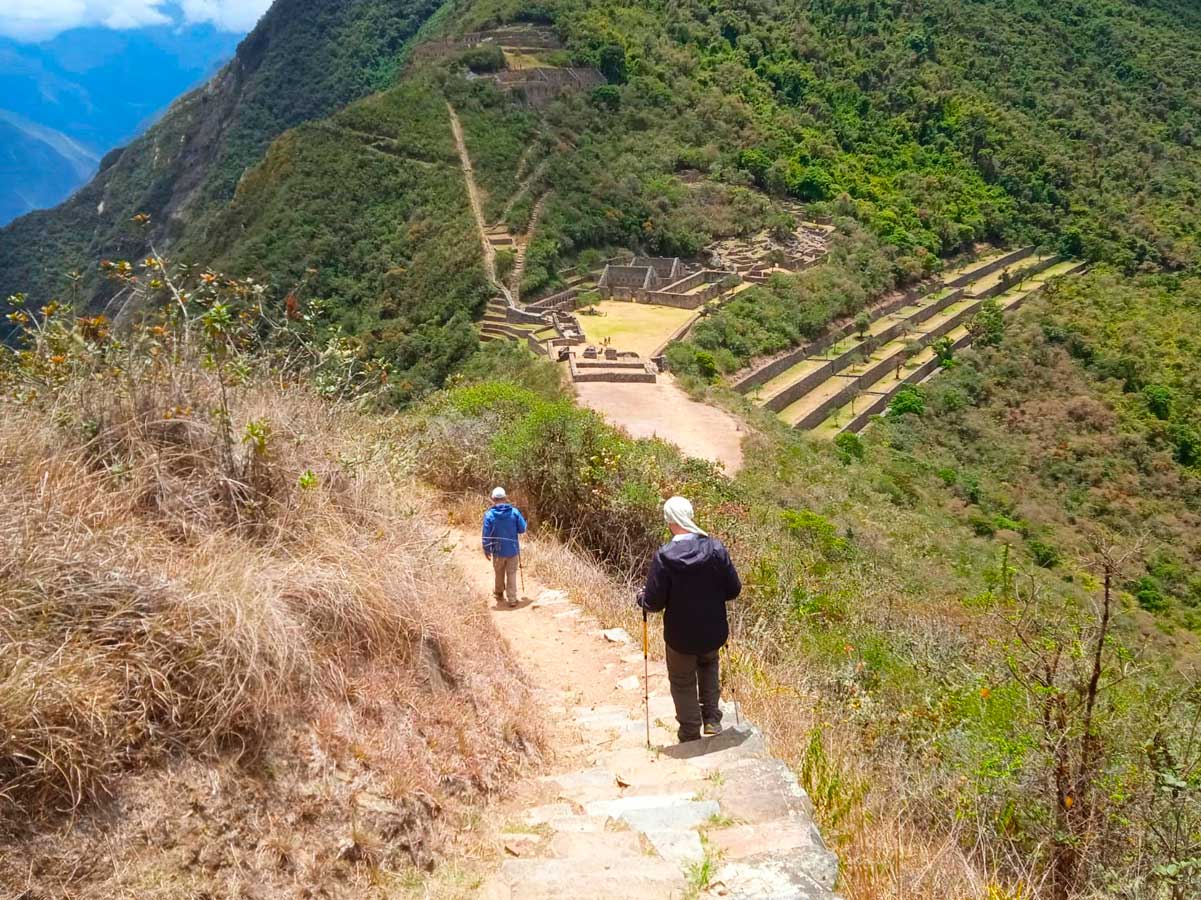
Where is Choquequirao located?
Choquequirao, also known as the “sister of Machu Picchu,” is located high in the Apurímac river canyon, in the Cusco region, province of La Convención, district of Santa Teresa. It is situated more than 3,000 meters above sea level, in a mountainous area that is part of the Vilcabamba mountain range.
This impressive archaeological complex is surrounded by deep canyons, green valleys, and imposing mountains. It is located about 100 kilometers west of the city of Cusco and more than 60 kilometers in a straight line from Machu Picchu.
There is no direct vehicular access to get to Choquequirao. The most common starting point is the town of San Pedro de Cachora, in the province of Abancay, department of Apurímac. From there, a demanding hike begins that can last between 4 to 5 days round trip, crossing spectacular landscapes and steep slopes. There are also alternate routes from Huanipaca or even longer expeditions that connect the Choquequirao to Machu Picchu route.
General Information:
- Location: In the District of Santa Teresa, Province of La Convención, Department of Cusco.
- Climate: Warm alternated with cold temperatures at night.
- Average temperature: The average annual temperature is 16 ° C.
- Season: In general, the climate is characterized by the alternation of a dry season (April - August).
- Access by land: In order to access the place, at present, you start from Cusco by the road to Abancay, until you take the detour to Cachora (2,800 masl), in the department of Apurímac, the journey takes approximately 4 hours. This is where the walk begins, some travelers decide to hire muleteers and mules to carry their luggage. The muleteers sometimes tend to act as guides. The entire round trip lasts 4 days and it is necessary to camp along the way.
- Rate: Adults 60 soles and students 30 soles.
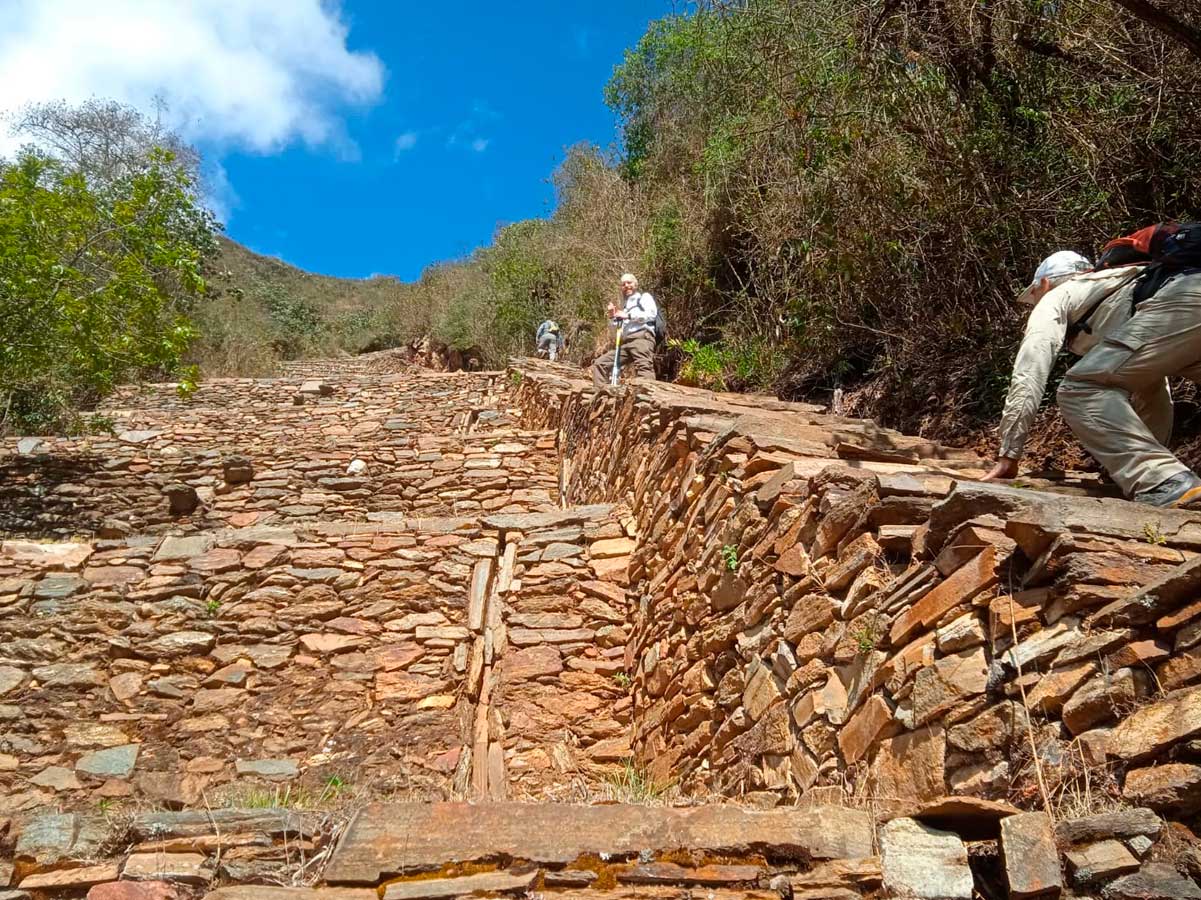
Weather in Choquequirao
The type of climate characteristic of the area is semi-dry temperate with relative humidity between 65% and 84%, dry in autumn and winter. Due to its geographical position, Choquequirao has a warm climate alternated with cold temperatures at night, the average annual temperature is 16 °C. In general, the climate is characterized by the alternation of a dry season (April - August), and another with incipient pluvial precipitations (September to December) and finally three months with a lot of rain (January - March); However, in the lower areas, rainfall is abundant and distributed regularly throughout the year.
FLORA AND FAUNA
The environment in Choquequirao Trek is one of the richest in biodiversity. All these species have been conditioned despite the temperature variations such as sunshine throughout the day and inclement frost during the night. The fauna of the place is composed mainly of condors, tarucas (Andean deer), vizcachas, foxes, skunks, pumas, hummingbirds, bears and the cock of the rocks, national bird of Peru. In its flora, giant ferns, ichu and a great variety of orchids stand out, where the wakanki variety stands out.
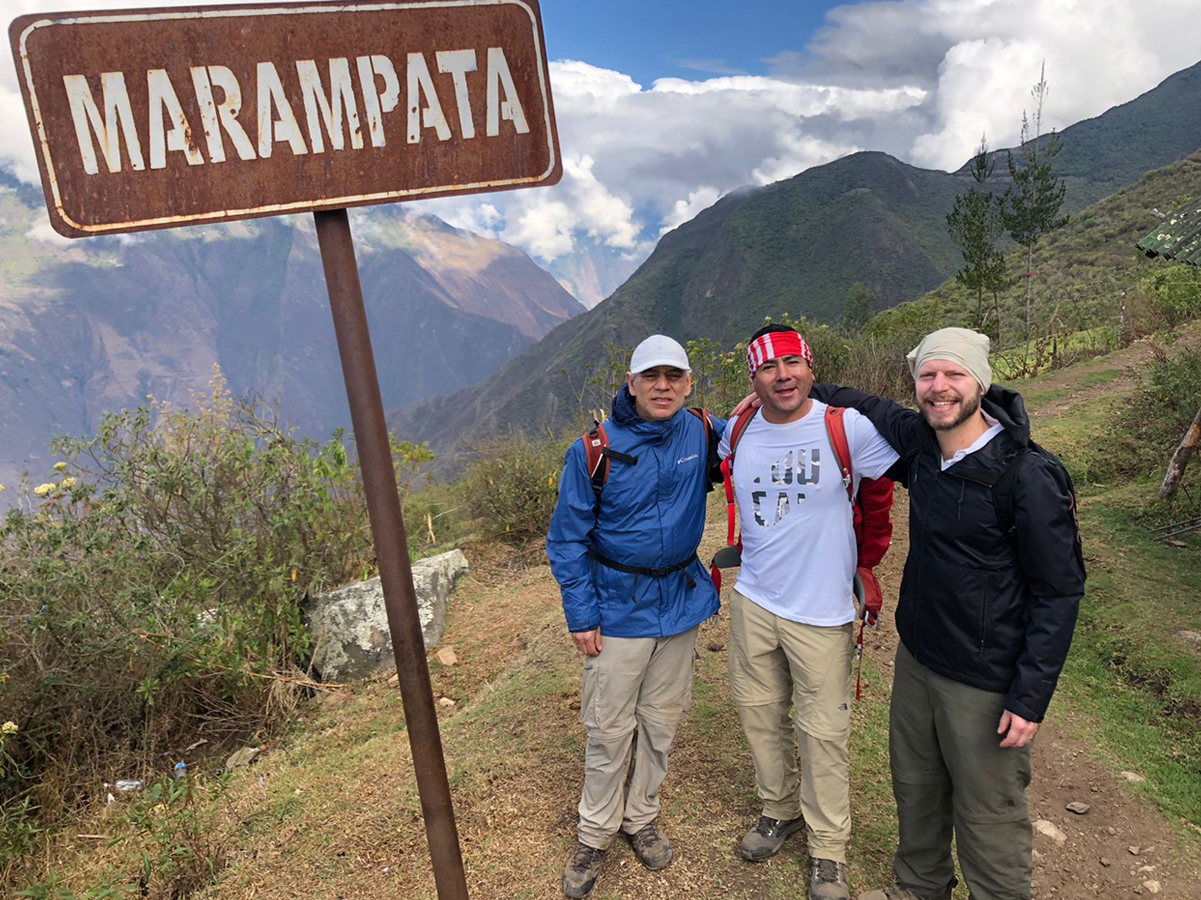
ARCHAEOLOGICAL COMPLEX OF CHOQUEQUIRAO
For the purposes of archaeological research, the complex has been divided into 12 spaces with Roman numerals from north to south. The monument at Choquequirao Trek is characterized by a set of platforms and enclosures around the main or central square and it is from it that there are buildings of kanchas and associated enclosures, as well as water sources associated with Qolqas.
- SECTOR I.- High part of the set called Hanan Square, also called upper square is a structure of two levels, next to the entrance of the main water channel that is caught the Ch'unchulmayu river, here is the main temple, ceremonial fountains , channels, a medium-sized Kallanka; in the lower part a small patio and two opposite rooms facing the same passage.
- SECTOR II.- Sector of the Qolqas, workshops, houses in which long and thin sequential buildings are described on two levels and on terraces of platforms formed by five buildings, on the left side there is a water source, here there are 16 platforms of experimental culture eminently ceremonial. Place destined preferably to the production of metallurgical and ceramic objects, place of housing for the craftsmen as well as places of storage of products.
- SECTOR III.- The central and broadest plaza of the complex, on the north side are Kanchas with its flatlands, the temple of Urin, adjacent to it are also two precincts of priests or twin sunturhuasis. In this sector is also located a rectangular Kallanka that was accommodation for visitors or travelers or as there is another explanation was the meeting place of the inhabitants.
- SECTOR IV.- Buildings located to the south of the central square, it is a double jamb with a labyrinth distribution in the interior, identified as Urin lower square, there is also the Urin double jamb temple in its windows and access doors to niches that are inside the temple.
- SECTOR V.- Platform with delimitation of irregular circular walls called Usnu, located on a small hill whose geomorphology was modified to achieve its surface.
- SECTOR VI.- Enclosures and structures at the southern end of the complex, where simple courts and two enclosures are connected by a set of platforms, also known as the priests' sector, which is made up of two precincts.
- SECTOR VII.- It is the sector of platforms which are divided by stairs, exclusively farming platforms for the class of the nobility, these platforms are larger and are divided into three terraces and their length is 15.0 meters long. long and 10 wide and the walls measure 4 meters high.
- SECTOR VIII.- The denominated sector of the llamas with a style very different from the Inca constructions and that seems a style of the Chachapoyas culture.
- SECTOR IX.- Pikiwasi, possibly the sector served to be occupied by the weavers, explains the innumerable samples of yarns and their respective instruments as pyres, spinning wheels made of camelid bones, all these proposals are only hypothesis of the research work that is developing.
- SECTOR X.- Corresponds to the sector of platforms located towards the extreme south east of the set, are agricultural platforms that are not intervened, is located in the Ch'unchulmayu river canyon.
- SECTOR XI.- The sector of Phaqchayoq that is being intervened by the Copesco plan, currently as well as the sector of Pinchiunuyoc that is on the slope of the Blanco River, which were eminently places of agricultural activity that later investigations confirmed or explained exact form.
- SECTOR XII.- Area of residential platforms and agricultural production, on the slope of the Blanco river, entering through Yanama. Known as the Phaqchayoq sector and includes two subsectors, agricultural platforms, House of the waterfall or waterfall.
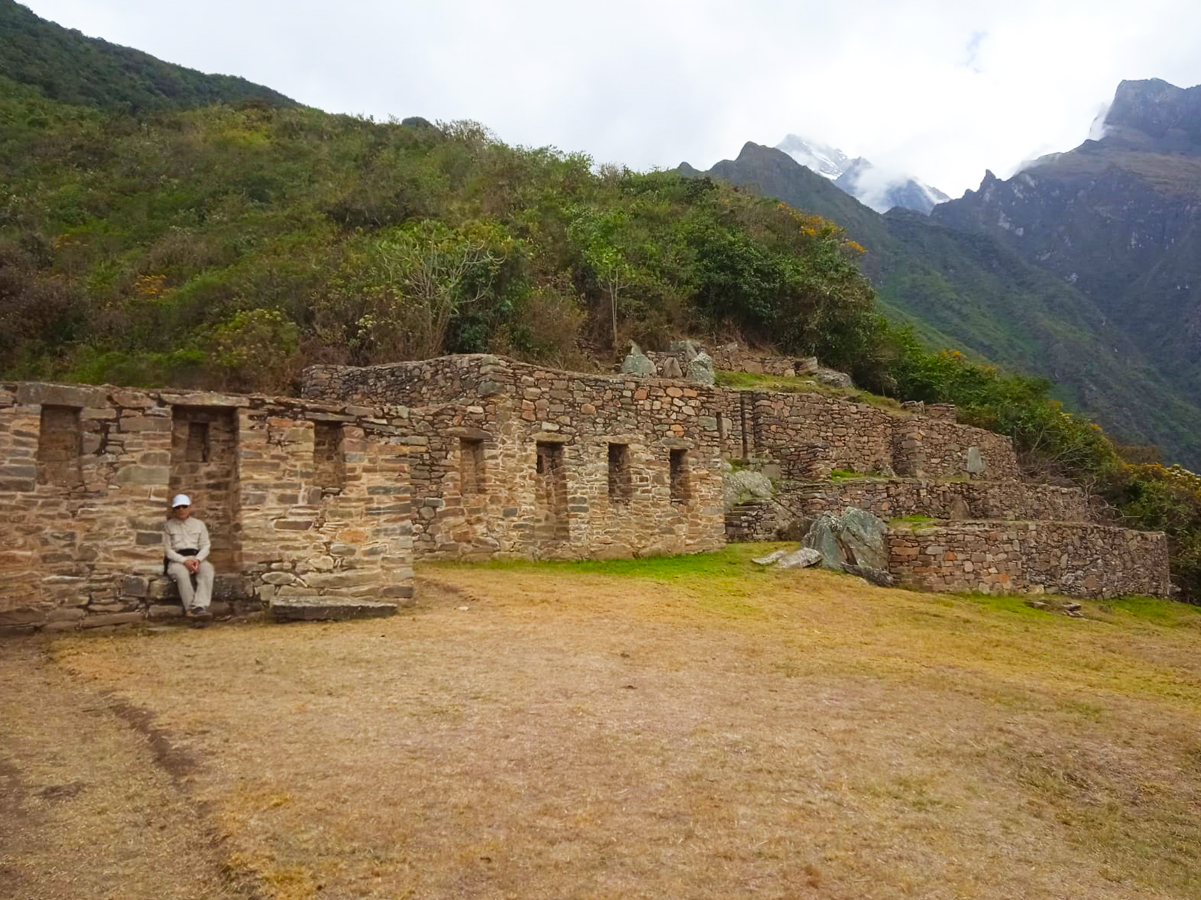
Recommendations for visiting Choquequirao
Visiting Choquequirao is a unique, but also demanding experience. The hike can last between 4 and 5 days (round trip), depending on the pace and itinerary, so good preparation is key to enjoying it to the fullest. Here are the most important recommendations:
- Good physical condition: It is essential to have physical endurance, as the route includes intense ascents and descents, narrow sections, and long days of walking under the sun. It is recommended to train beforehand with multi-day hikes or cardiovascular exercises.
- Pack light: Pack only the essentials. A light backpack will make the hike much more bearable. Prioritize light, quick-drying clothing, a headlamp, sunscreen, a reusable bottle, energy snacks, and a basic first-aid kit.
- Camping gear: Since there are no lodgings along the route, it is necessary to bring a tent, a sleeping bag suitable for low temperatures (especially at night), a thermal pad, and utensils to prepare food if you are going on your own.
- Hire a guide or tour: Although it is possible to do the route on your own, many people choose to hire organized tours, which include transportation, guides, pack mules, and food. This makes the experience lighter and allows you to focus on the surroundings.
- Avoid the rainy season: The best time to do the hike is between April and October. During the rainy season (November to March), the paths become slippery and dangerous, and there may be landslides.
- Prior acclimatization: Choquequirao is located at more than 3,000 meters above sea level, so it is advisable to spend a few days in Cusco or similar areas before starting the hike, so that the body can adapt to the altitude.
- Respect for the environment: This archaeological center is a sacred and historical site, surrounded by nature. Do not leave trash, do not remove stones or plants, and avoid damaging the archaeological structures.
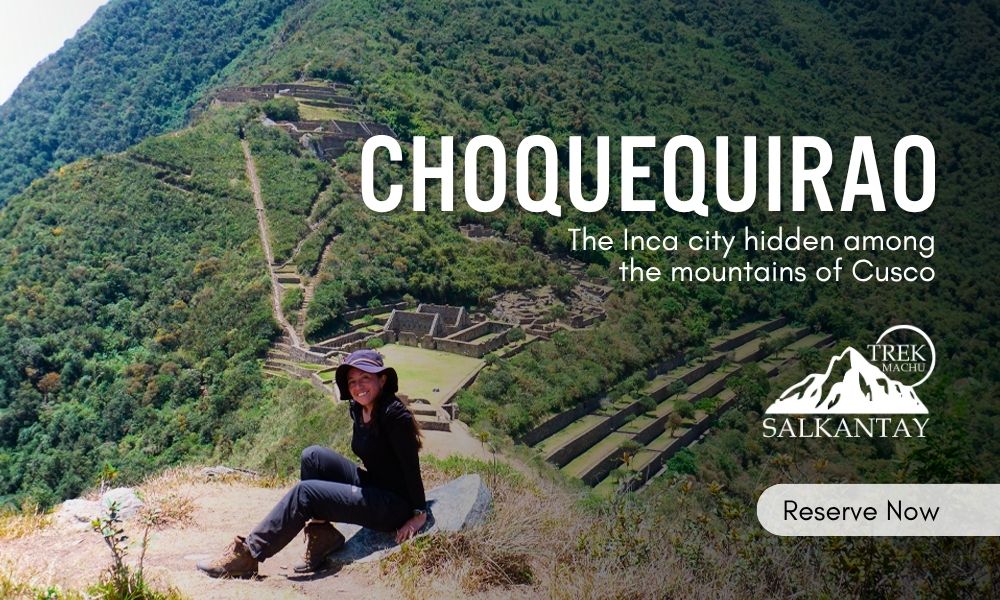
Reasons why this trek is worthwhile
When one thinks about touring Peru, it's common to lean towards the famous Inca Trail, the cultural tour through Lares, or even the route to Machu Picchu. But if you are looking for a more challenging, authentic, and unconventional experience, the hike to Choquequirao, either on a direct route or as part of the trek to Machu Picchu, offers strong reasons to choose it:
- Impressive ruins without crowds: Unlike Machu Picchu, Choquequirao receives very few visitors per day. This allows you to explore its wide terraces, temples, and plazas in silence, surrounded only by nature and mountains.
- An authentic experience: There are no trains or roads that lead to Choquequirao. Getting there requires physical effort and commitment, which makes this hike a genuine adventure, far from conventional tourism.
- Diverse and spectacular landscapes: The route crosses the Apurímac Canyon, goes through humid forests, dry areas, and high-altitude passes, with views that constantly change between snow-capped mountains, deep rivers, and green ravines.
- Physical challenge and personal achievement: The Choquequirao trek is demanding: it involves descents and ascents of more than a thousand meters. For many, reaching the summit after several days of hiking represents one of their greatest personal conquests.
- A deep connection with Inca history: Choquequirao was a key political and ceremonial center. Its remains show Andean engineering and vision, and new structures covered by vegetation are still being discovered.
- A still-intact destination: Mass tourism has not yet arrived. Exploring Choquequirao now is a unique opportunity to live an exclusive experience, before the future installation of a cable car makes access easier.
The hike to Choquequirao is not easy, but it is precisely that effort that makes it one of the most valuable routes for lovers of trekking, history, and adventure in Peru.
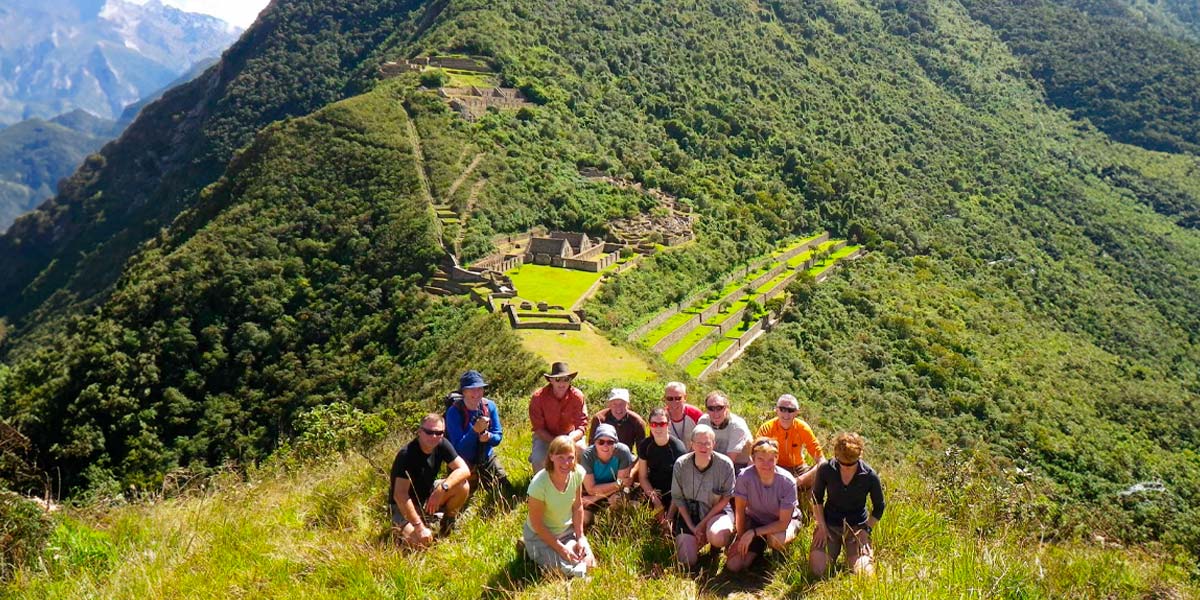
The Best Machu Picchu Tours
Visiting Machu Picchu is a unique experience, where you will see spectacular landscapes and get to know the history and culture of one of the 7 wonders of the world firsthand. There are multiple ways to get to this wonder of the world, each with its own charm and level of adventure. To help you choose, here are the most popular tours to Machu Picchu:




